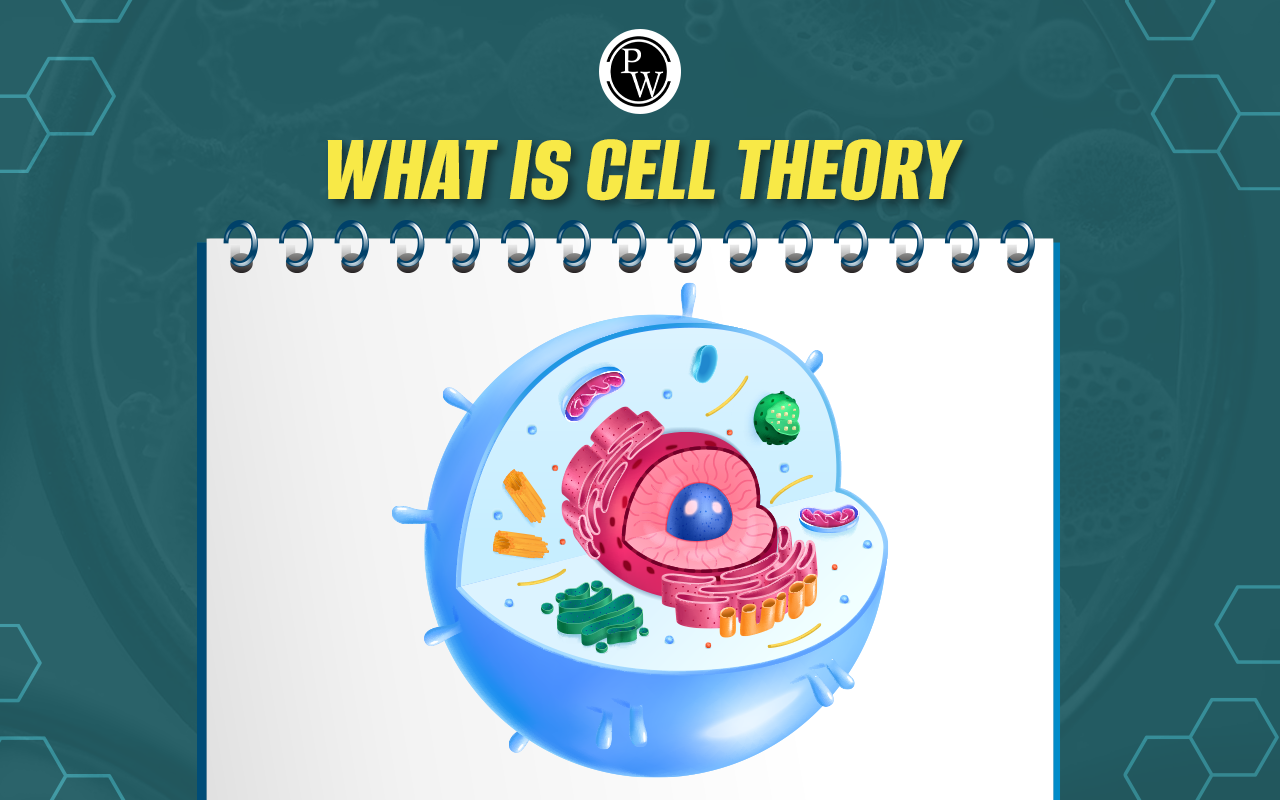
Mammary Glands: The mammary glands, commonly referred to as breasts, are specialized glandular organs situated on the chest. Mammary glands consist of connective tissue, fat, and glandular tissue capable of producing milk. They are more developed in females than in males. Mammary glands produce milk, while structurally, they are considered modified sweat glands. The primary components of a mature mammary gland include alveoli (small, hollow cavities a few millimeters in size) lined with milk-secreting cuboidal cells, surrounded by myoepithelial cells. The article below details the anatomy, location, and function of mammary glands in both sexes.
Mammary Glands Definition
The mammary gland is a unique feature found in mammals, responsible for secreting, synthesizing, and delivering milk to newborns for their protection, nourishment, and development. Mammary glands are milk-producing structures located within the breast tissue of mammals, derived from the word "mammal," indicating their importance in classifying an organism as such. These glands are present in both male and female mammals, though they are typically more developed in females. They are paired organs made up of connective tissue and fat, located on either side of the anterior chest wall. The main function of mammary glands is to secrete milk. They are considered part of the female reproductive system's accessory organs, and while present in both sexes, they are more prominent in females. The mammary gland is located in the superficial fascia of the pectoral area, with the axillary tail extending into the axilla. It is classified as an apocrine gland, with secretion involving the loss of the apical region of the cells and a portion of the cytoplasm.Mammary Glands Location
The mammary glands within the breasts on the anterior chest wall extend vertically from the second to the sixth rib and horizontally from the sternum to the mid-axillary line. In certain mammalian species, such as cows and goats, the mammary glands are situated in the udder, located between the hind legs. Dogs and cats are positioned on the body's ventral surface and referred to as teats or mammary papillae.Mammary Glands Types
There are two types of mammary glands, each with its distinct characteristics:- Simple mammary gland: This gland is characterized by multiple milk-secreting tissues that lead to a single lactiferous duct.
- Complex mammary gland: This gland consists of several simple mammary glands and serves only one nipple. In humans, each breast contains one complex mammary gland, composed of 10-20 simple glands.
Mammary Glands Anatomy
The mammary glands in the breasts emerge in pairs from modified sweat glands. All individuals are born with mammary glands, but only those who experience increased oestrogen levels during puberty develop fully formed mammary glands and breasts. Conversely, individuals who experience a spike in testosterone during puberty will have undeveloped mammary glands and no breast development. The external breast features an elevated nipple surrounded by a dark area known as the areola. The breast comprises 15-20 lobes of glandular tissue that radiate outward in a circular pattern from the nipple's core. Milk ducts collect milk from lobules, which are small tissue sections within the lobes. These ducts widen at the nipple to gather milk, then narrow again, with each duct opening individually at the nipple. Please refer to the mammary gland diagram for a visual representation.| Other NEET Biology Topics | ||
|---|---|---|
| Ribosomes | Pollination | Apomixis |
| Centrosome | Embryo | Tissues |
| Rhizopus | Pinus | Gluconeogenesis |
| Chlamydomonas | Chara | Ribs |
Mammary Glands Structure
The mammary gland's structure consists of three parts: skin, parenchyma, and stroma.Mammary Glands in Female
The mammary glands serve as the milk-producing structures in female mammals. Situated on the chest wall, above the pectoralis major muscle, these glands comprise glandular tissue, fatty tissue, blood vessels, nerves, and lymph vessels. Glandular tissue is responsible for milk production, while fatty tissue determines breast size and shape. The female mammary gland perform the following functions:- The primary role of mammary glands is to produce milk for newborn nourishment. Milk production is triggered by the hormones prolactin and oxytocin, released during pregnancy and lactation. Prolactin stimulates milk-producing cell production, while oxytocin induces milk release.
Structure of Mammary Glands in Females
Mammary gland structure in females is as follows:- Lobes: Each mammary gland is divided into 15-20 lobes, radiating outward from the nipple.
- Lobules: Lobes further divide into smaller lobules, containing clusters of milk-producing cells (alveoli).
- Alveoli: These are the functional units of mammary glands, responsible for milk production.
- Ducts: Milk travels from alveoli through ducts to lactiferous sinuses behind the nipple.
- Nipple and Areola: The nipple, a raised projection at the breast center, contains lactiferous ducts opening at the tip. The areola, a darker area surrounding the nipple, has sebaceous glands producing protective oil.
Structural Organisation In Animals
Mammary Glands in Male
Male mammals also possess mammary glands, albeit less developed. In most males, mammary glands are rudimentary, with few ducts and some fatty tissue. The following are the reasons for rudimentary glands- Hormones: Estrogen promotes mammary gland growth, while testosterone inhibits it. With higher testosterone levels, male glands remain underdeveloped.
- Evolution: Evolutionarily, males don't require milk production, reducing the need for well-developed mammary glands.
Gynecomastia
Gynecomastia, enlarging breast tissue in males, is common in adolescents and older men. It results from hormonal imbalances, certain medications, or medical conditions. While usually benign, causing no major concerns, treatments are available if discomfort or embarrassment occurs. Even though male mammary glands are typically underdeveloped, some species' males can lactate under exceptional circumstances.Mammary Glands Function
The mammary glands constitute a pivotal component of the female reproductive system, serving the essential function of producing milk to sustain newborns. Mammary glands perform various functions such as:- Milk Production (Lactation): Mammary glands initiate milk production through lactation, regulated primarily by hormones such as prolactin. This hormone stimulates the alveoli, the milk-producing cells, to commence milk synthesis.
- Milk Secretion: Infant suckling triggers nerve endings, prompting the brain to release oxytocin. This hormone induces the contraction of muscle cells surrounding the alveoli, propelling milk into the ducts for the infant's consumption.
- Colostrum Production: In the initial days postpartum, mammary glands secrete colostrum, a nutrient and antibody-rich fluid. Colostrum provides vital nourishment and immune protection to the newborn.
- Milk Composition: Breast milk is composed of a balanced array of nutrients, including proteins, fats, carbohydrates, vitamins, and minerals, specifically tailored to the infant's requirements. Additionally, breast milk contains antibodies that bolster the infant's immune system, shielding them from infections and diseases.
- Storage and Release: Mammary glands can store milk between feedings. Upon suckling, milk is released through the nipple via a reflex action triggered by the infant's sucking and the stimulation of nerve endings in the nipple.
- Maintenance of Milk Production: Consistent and effective breastfeeding is imperative for sustaining milk production. Increased breastfeeding frequency stimulates the mammary glands to produce more milk, adequately meeting the infant's escalating nutritional needs.
| NEET Exam Important Links | |
|---|---|
| NEET Biology Syllabus | NEET Biology Diagrams |
| NEET Biology MCQ | NEET Biology Chapter wise Weightage |
| NEET Biology Notes | NEET Previous Year Question papers |
Mammary Glands FAQs
What are the mammary glands?
The mammary gland comprises connective tissue, fat, and glandular tissue responsible for milk production, commonly called the breast.
What is the function of mammary glands?
The mammary gland is a specialized organ on the anterior chest wall, designed primarily for milk secretion. While present in both sexes, it is more developed in females and rudimentary in males.
Do males have mammary glands?
Typically, males cannot lactate or breastfeed. Although males possess the anatomical structures necessary for lactation, such as nipples, mammary glands, and pituitary glands, they do not naturally produce the hormones required for milk production.
What is the structure of a mammary gland?
The mammary gland consists of three main parts: the skin, parenchyma, and stroma. The skin includes the nipple and areola. The parenchyma comprises 15 to 20 secretory lobules, while the stroma is composed of fibrous and fatty tissue that provides support.
Why is it called a mammary gland?
Mammary glands are named after the term "mammal" due to their role in producing, storing, and secreting milk, a defining characteristic of mammals.
🔥 Trending Blogs
Talk to a counsellorHave doubts? Our support team will be happy to assist you!

Check out these Related Articles
Free Learning Resources
PW Books
Notes (Class 10-12)
PW Study Materials
Notes (Class 6-9)
Ncert Solutions
Govt Exams
Class 6th to 12th Online Courses
Govt Job Exams Courses
UPSC Coaching
Defence Exam Coaching
Gate Exam Coaching
Other Exams
Know about Physics Wallah
Physics Wallah is an Indian edtech platform that provides accessible & comprehensive learning experiences to students from Class 6th to postgraduate level. We also provide extensive NCERT solutions, sample paper, NEET, JEE Mains, BITSAT previous year papers & more such resources to students. Physics Wallah also caters to over 3.5 million registered students and over 78 lakh+ Youtube subscribers with 4.8 rating on its app.
We Stand Out because
We provide students with intensive courses with India’s qualified & experienced faculties & mentors. PW strives to make the learning experience comprehensive and accessible for students of all sections of society. We believe in empowering every single student who couldn't dream of a good career in engineering and medical field earlier.
Our Key Focus Areas
Physics Wallah's main focus is to make the learning experience as economical as possible for all students. With our affordable courses like Lakshya, Udaan and Arjuna and many others, we have been able to provide a platform for lakhs of aspirants. From providing Chemistry, Maths, Physics formula to giving e-books of eminent authors like RD Sharma, RS Aggarwal and Lakhmir Singh, PW focuses on every single student's need for preparation.
What Makes Us Different
Physics Wallah strives to develop a comprehensive pedagogical structure for students, where they get a state-of-the-art learning experience with study material and resources. Apart from catering students preparing for JEE Mains and NEET, PW also provides study material for each state board like Uttar Pradesh, Bihar, and others
Copyright © 2025 Physicswallah Limited All rights reserved.
Get App









